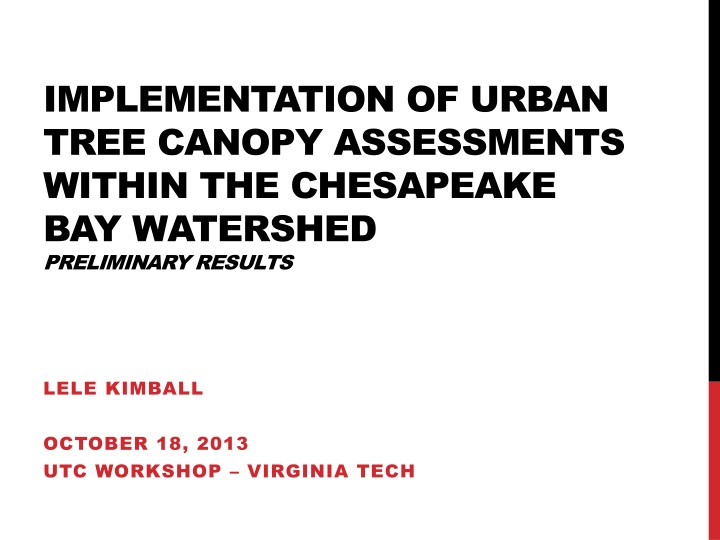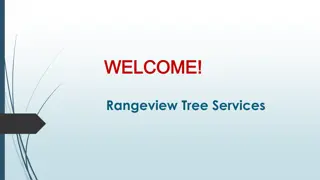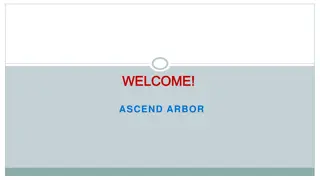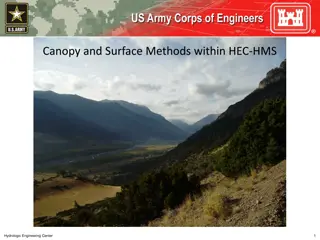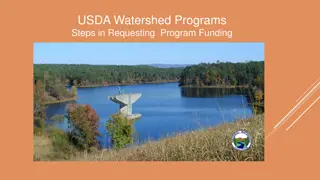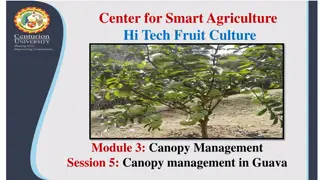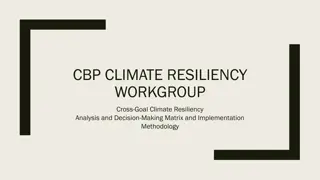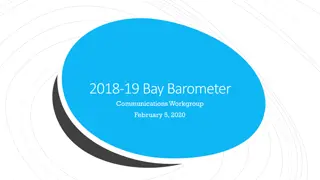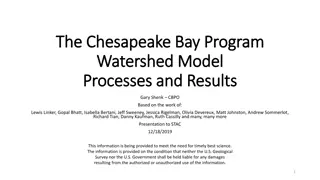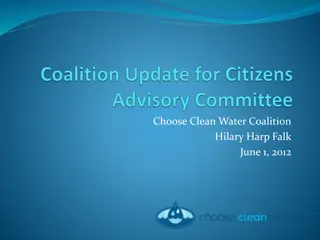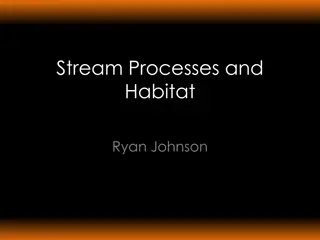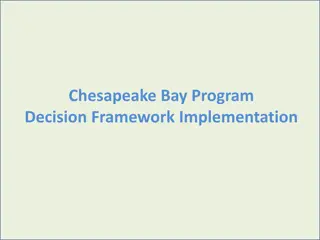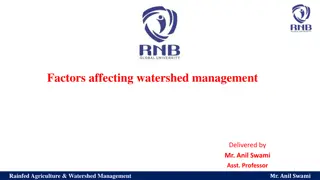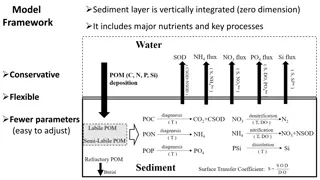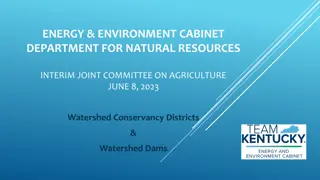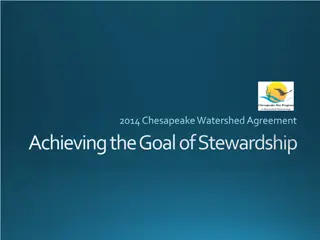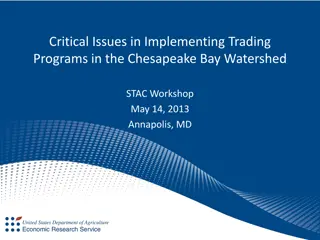Preliminary Results of Urban Tree Canopy Assessments in Chesapeake Bay Watershed
implementation of urban tree canopy assessments within the Chesapeake Bay watershed, focusing on environmental, economic, and social benefits. Learn about the measures taken to assess and expand urban tree canopy in the region and the research questions guiding further exploration.
Download Presentation

Please find below an Image/Link to download the presentation.
The content on the website is provided AS IS for your information and personal use only. It may not be sold, licensed, or shared on other websites without obtaining consent from the author.If you encounter any issues during the download, it is possible that the publisher has removed the file from their server.
You are allowed to download the files provided on this website for personal or commercial use, subject to the condition that they are used lawfully. All files are the property of their respective owners.
The content on the website is provided AS IS for your information and personal use only. It may not be sold, licensed, or shared on other websites without obtaining consent from the author.
E N D
Presentation Transcript
IMPLEMENTATION OF URBAN TREE CANOPY ASSESSMENTS WITHIN THE CHESAPEAKE BAY WATERSHED PRELIMINARY RESULTS LELE KIMBALL OCTOBER 18, 2013 UTC WORKSHOP VIRGINIA TECH
URBAN TREE CANOPY Watershed Forestry Resource Guide - Urban Tree Canopy EnvironmentalBenefits Economic Benefits Social Benefits
URBAN TREE CANOPY (UTC) ASSESSMENT Measures amount of both existing and possible UTC UTC assessment is data! Can help decision makers effectively design and implement the urban forest McKee, J. (2009).
CHESAPEAKE BAY WATERSHED Continues to experience population growth and increasing urbanization1 Currently 17 million people 150,000 more people each year Nearly 65,000 mi. sq. Loses about 100 acres of forest per day2 By 2010, five communities in each state with: Completed assessment Canopy goal adopted Measures to attain the goal 120 communities with UTC expansion goals by 2020 Washington Gas Energy Services, Inc. (WGES)
RESEARCH QUESTIONS How are localities in the Chesapeake Bay watershed using UTC assessments? Are there ways to increase the use of those assessments?
METHODS Web-based survey sent to each locality within the Chesapeake Bay watershed with a UTC assessment Approximately 9.2% of the area in the watershed has a UTC assessment Total of 100 counties, cities, and towns/boroughs (PA) Population range from 2,500 to 1.1 million Area range from 0.5 sq. mi. to almost 1,000 sq. mi. Washington Gas Energy Services, Inc. (WGES)
Respondents by State and Locality Type City County Town 25 55% response rate from localities Number of Responding Localities 20 Representing : 80% of total area with UTC assessment 15 10 5 0 DC DE MD PA VA WV State
Localities' Awareness of UTC Assessment by State and Locality Type Unaware of UTC Assessment Aware of UTC Assessment 12 10 Number of Localities 8 6 4 2 0 State and Locality Type 67% of localities aware of their UTC assessment Positive bias due to non-response?
MOST COMMON TYPES OF USES 85% Educate public and officials about tree canopy
MOST COMMON TYPES OF USES 65%-75% Create a locality-wide tree canopy goal Plan and prioritize tree plantings Baseline for canopy change Inform larger initiatives
ADVANCED TYPES OF USES Informing and Enforcing Tree Preservation in Policies and Planning Financial and Public Buy-In In-Depth Goal Setting and Prioritization Gathering Data for External Leveraging Create a locality-wide tree canopy goal Educate public and officials about tree canopy Plan and prioritize tree plantings Baseline for canopy change Inform larger initiatives
ADVANCED TYPES OF USES Informing and Enforcing Tree Preservation in Policies and Planning Financial and Public Buy-In In-Depth Goal Setting and Prioritization Gathering Data for External Leveraging Create a locality-wide tree canopy goal Educate public and officials about tree canopy Plan and prioritize tree plantings Baseline for canopy change Inform larger initiatives
ADVANCED TYPES OF USES Informing and Enforcing Tree Preservation in Policies and Planning Financial and Public Buy-In In-Depth Goal Setting and Prioritization Gathering Data for External Leveraging Create a locality-wide tree canopy goal Educate public and officials about tree canopy Plan and prioritize tree plantings Baseline for canopy change Inform larger initiatives
ADVANCED TYPES OF USES Informing and Enforcing Tree Preservation in Policies and Planning Financial and Public Buy-In In-Depth Goal Setting and Prioritization Gathering Data for External Leveraging Create a locality-wide tree canopy goal Educate public and officials about tree canopy Plan and prioritize tree plantings Baseline for canopy change Inform larger initiatives
STAFF EXPERTISE AND TRAINING Localities with: less likely to be using assessment in sophisticated ways. lack of staff expertise = more likely to be using the assessment but not necessarily in more sophisticated ways. staff trained or attended a workshop on how to use = UTC data So training perhaps is only introductory?
BIGGEST OPPORTUNITIES FOR FUTURE USE Informing and Enforcing Tree Preservation in Policies and Planning Financial and Public Buy-In In-Depth Goal Setting and Prioritization Gathering Data for External Leveraging
BIGGEST OPPORTUNITIES FOR FUTURE USE Informing and Enforcing Tree Preservation in Policies and Planning Financial and Public Buy-In Plan and prioritize tree canopy conservation In-Depth Goal Setting and Prioritization Gathering Data for External Leveraging prioritize outreach Plan and Develop sub- locality level tree canopy goals
IMPLICATIONS Currently UTC assessments are underutilized. Raising awareness may increase the number of localities using UTC assessments. Lack of staff expertise constrains more sophisticated uses. Need to increase staff expertise. How to do this? Through training? If so, need to investigate effectiveness of training and have in-depth training. Biggest opportunity for that training may be in in-depth prioritization and goal setting.
QUESTIONS? REFERENCES REFERENCES 1) Ruark, E. A. (2010). Immigration, Population Growth and the Chesapeake Bay: Federation for American Immigration Reform. 2) Chesapeake Bay Program. (2012a). Facts and Figures. Retrieved 9/28/2012, from http://www.chesapeakebay.net/discover/bay101/facts FIGURES AND PHOTOS FIGURES AND PHOTOS "Watershed Forestry Resource Guide - Urban Tree Canopy." Watershed Forestry Resource Guide. Accessed 14 Oct. 2013. <http://www.forestsforwatersheds.org/urban- tree-canopy/>. "Washington Gas Energy Services, Inc. (WGES) ." Washington Gas Energy Services, Inc. (WGES). Accessed14 Oct. 2013. <http://www.wges.com/page/CleanStepsOffsets.html>. McKee, J. (2009). UTC Report for Blacksburg, VA. Blacksburg, VA: Virginia Tech.
